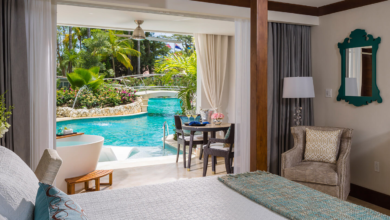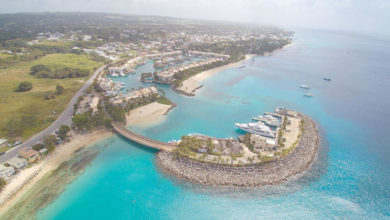Discover the Enchanting Comoros Islands: A Hidden Gem in the Indian Ocean

Discover the Enchanting Comoros Islands: A Hidden Gem in the Indian Ocean
Introduction:
Nestled in the turquoise waters of the Indian Ocean, the Comoros Islands are a captivating archipelago that offers a unique blend of natural beauty, cultural diversity, and tranquil surroundings. With their pristine beaches, lush forests, and vibrant marine life, these islands are a paradise for nature enthusiasts and adventure seekers. In this featured article, we will take you on a virtual journey to the Comoros Islands, providing you with a comprehensive tourist guide to help you plan an unforgettable trip to this hidden gem.
- Arrival and Getting Around:
The Comoros Islands consist of four main islands: Grande Comore, Mohéli, Anjouan, and Mayotte. The primary gateway to the archipelago is Prince Said Ibrahim International Airport, located in Hahaya, Grande Comore. From there, domestic flights, ferry services, and private boats connect the islands, making it relatively easy to explore the entire region. Taxis and rental cars are available for transportation within the islands, with Grande Comore offering the most extensive options. - Exploring Grande Comore:
Grande Comore, the largest island in the archipelago, boasts stunning volcanic landscapes and picturesque coastal towns. Start your journey in the capital city, Moroni, where you can visit the iconic Grande Mosquée du Vendredi and explore the lively local markets. Don’t miss the opportunity to hike up Mount Karthala, an active volcano offering breathtaking views of the island. The beautiful beaches of Chomoni and Itsandra are perfect for relaxation and water activities such as snorkeling and diving. - Serene Mohéli:
For a tranquil escape, head to Mohéli, the smallest and least developed of the Comoros Islands. This eco-friendly destination is renowned for its marine biodiversity and is home to the world’s first humpback whale sanctuary. Embark on a whale-watching excursion, swim with sea turtles in the clear waters of Nioumachoua, or explore the untouched beauty of Mohéli Marine Park. Experience the laid-back island life and immerse yourself in the local culture by staying in traditional bungalows. - Cultural Delights of Anjouan:
Anjouan is a treasure trove of cultural heritage and natural wonders. Explore the historic town of Mutsamudu, known for its beautiful architecture and bustling markets. Visit the Domoni Palace, a stunning example of Arab-Islamic architecture, and the ancient ruins of the Gombé Tsingoni Mosque. Anjouan’s lush landscapes offer opportunities for hiking, birdwatching, and discovering hidden waterfalls. Don’t forget to try the local cuisine, influenced by African, Arab, and French flavors. - Mayotte: A Unique Blend:
Although geographically part of the Comoros Islands, Mayotte is an overseas department of France, offering a distinct cultural and administrative identity. Discover the rich marine biodiversity of Mayotte’s lagoon, a UNESCO World Heritage site, by snorkeling or diving. Explore the lively markets and colorful streets of Mamoudzou, the capital city, and immerse yourself in the island’s multicultural atmosphere. Mayotte is also famous for its sea turtles, and you can witness their nesting rituals on the beaches. - Practical Information and Tips:
- Currency: The official currency is the Comorian franc (KMF).
- Language: Comorian, French, and Arabic are widely spoken.
- Visa: Check the visa requirements before traveling, as they may vary depending on your nationality.
- Climate: The Comoros Islands have a tropical climate, with the dry season from May to November and the wet season from December to April.
- Safety: While generally safe, it’s advisable to take precautions and stay updated on the local political and social situations.
These additional details provide a deeper understanding of the Comoros Islands’ history, culture, and daily life. Whether you’re interested in exploring the islands’ historical sites, engaging with the local communities, or simply enjoying the natural beauty, the Comoros Islands offer a fascinating and enriching experience.

some additional information about the Comoros Islands:
- Unique Cultural Heritage:
The Comoros Islands have a rich history and cultural heritage influenced by African, Arab, and French traditions. The local culture is predominantly influenced by Islam, and you’ll find many mosques, vibrant markets, and traditional music and dance performances. The Comorians are known for their warm hospitality and welcoming nature, making visitors feel at home during their stay. - Ecotourism and Natural Wonders:
The Comoros Islands are a paradise for nature lovers and ecotourism enthusiasts. The archipelago boasts stunning landscapes, including volcanic peaks, dense rainforests, and pristine beaches. The islands are home to a diverse range of flora and fauna, with several endemic species found nowhere else on Earth. Exploring the islands’ national parks, such as Mount Karthala National Park and Mohéli Marine Park, allows you to witness the incredible biodiversity and conservation efforts in the region. - Marine Life and Water Activities:
The Comoros Islands offer exceptional opportunities for marine exploration and water activities. The crystal-clear waters surrounding the islands are teeming with colorful coral reefs, tropical fish, and other marine creatures. Snorkeling and diving enthusiasts can discover vibrant underwater ecosystems, encounter sea turtles, dolphins, and even spot humpback whales during the migration season. Fishing charters are also available for those looking to try their hand at deep-sea fishing. - Culinary Delights:
The local cuisine of the Comoros Islands is a delightful fusion of flavors influenced by African, Arab, and French culinary traditions. Seafood plays a significant role in Comorian cuisine, with dishes such as octopus curry, grilled fish, and coconut-based stews being popular choices. Other traditional dishes include pilao (spiced rice with meat or vegetables), mataba (spinach and cassava leaves cooked in coconut milk), and samoussa (a local version of samosas). Don’t miss the opportunity to savor the unique flavors of Comorian cuisine during your visit. - Festivals and Events:
The Comoros Islands celebrate various cultural and religious festivals throughout the year, providing visitors with a chance to witness vibrant traditions and join in the festivities. One of the most significant festivals is Eid al-Fitr, marking the end of Ramadan, during which the islands come alive with feasts, prayers, and community gatherings. Additionally, traditional music and dance performances, such as the “Mbiwi” dance, showcase the cultural vibrancy of the islands. - Responsible Tourism:
As the Comoros Islands are relatively untouched by mass tourism, sustainable and responsible travel practices are crucial to preserving the islands’ natural beauty and cultural heritage. Support local businesses, respect the environment, and engage in community-based tourism initiatives to ensure a positive impact on the local communities and ecosystems.
The Comoros Islands offer a unique and authentic travel experience for those seeking a blend of natural beauty, cultural immersion, and tranquility. With its warm people, pristine landscapes, and diverse marine life, this hidden gem in the Indian Ocean is truly a destination worth exploring.

some additional details about the Comoros Islands:
- Volcanic Landscapes:
The Comoros Islands are of volcanic origin, resulting in breathtaking landscapes characterized by towering peaks and dramatic cliffs. Mount Karthala, an active volcano on Grande Comore, is one of the main attractions. Adventurous travelers can embark on a challenging hike to the summit, which offers panoramic views of the island and its surrounding waters. The volcanic soil also contributes to the lush greenery and fertile agricultural lands found across the islands. - Unique Flora and Fauna:
The Comoros Islands are a biodiversity hotspot, boasting a remarkable array of plant and animal species. The dense rainforests and protected areas harbor endemic flora, including rare orchids, pitcher plants, and indigenous tree species. The islands are home to a variety of wildlife, such as the Livingstone’s fruit bat, Coquerel’s sifaka (a type of lemur), and the Comoro green pigeon. Birdwatchers will be delighted by the opportunity to spot numerous endemic and migratory bird species. - Traditional Crafts and Artisans:
The Comoros Islands have a rich tradition of craftsmanship, with skilled artisans creating intricate handicrafts using traditional techniques. Visit local markets and workshops to find beautifully woven baskets, colorful textiles, wood carvings, and pottery. These crafts not only make for unique souvenirs but also provide an insight into the islands’ cultural heritage and the talents of the local communities. - Island Hopping and Exploring Hidden Gems:
One of the joys of visiting the Comoros Islands is the ability to go island hopping and discover hidden gems off the beaten path. Take a boat or ferry to explore the smaller islands, such as Mohéli and Anjouan, where you can encounter untouched beaches, pristine coral reefs, and charming fishing villages. These less-visited islands offer a more tranquil and authentic experience, allowing you to immerse yourself in the local way of life and enjoy the natural beauty at a slower pace. - Traditional Medicine and Plant Remedies:
The Comoros Islands have a long history of traditional medicine practices that rely on the healing properties of local plants and herbs. Traditional healers, known as “ngazidja” or “mashafi,” use their knowledge of medicinal plants to treat various ailments. Some plants commonly used in traditional medicine include lemongrass, aloe vera, and the endemic plant called “Ylang-Ylang,” which is also used in the production of perfumes. - Conservation Efforts:
Given the rich biodiversity and fragile ecosystems of the Comoros Islands, conservation efforts play a vital role in preserving the natural heritage. Several local and international organizations are actively involved in initiatives such as reforestation, marine conservation, and sustainable tourism practices. Visitors can learn about these efforts and even participate in conservation programs, making a positive contribution to the preservation of the islands’ unique environment.
The Comoros Islands offer a captivating blend of natural wonders, cultural traditions, and opportunities for exploration. Whether you’re interested in adventure activities, immersing yourself in local customs, or simply enjoying the serenity of untouched landscapes, the Comoros Islands provide a truly unforgettable experience.

some more details to further enrich your knowledge about the Comoros Islands:
- Pristine Beaches:
The Comoros Islands boast pristine and secluded beaches that are perfect for relaxation and water activities. The soft white sands and crystal-clear waters provide an idyllic setting for sunbathing, picnicking, and enjoying the serene coastal beauty. Some notable beaches include Galawa Beach on Grande Comore, where you can witness sea turtles nesting, and N’Gouja Beach on Mohéli, known for its picturesque palm-fringed shoreline. - Traditional Music and Dance:
Music and dance are integral parts of Comorian culture, and experiencing these vibrant art forms is a must during your visit. Traditional Comorian music is characterized by the use of local instruments such as the “gambusi” (a type of lute) and “dzendze” (a percussion instrument). Local dance forms, including the “Mbiwi” dance and “Ngoma ya Shigoma,” are performed during festive occasions and cultural celebrations, and often involve energetic movements and rhythmic drumming. - Spice and Plantations:
The Comoros Islands have a long history of spice production, and visiting the spice plantations is a fascinating experience. Take a tour to learn about the cultivation and processing of aromatic spices such as cloves, vanilla, and nutmeg. You can witness firsthand how these valuable crops are grown, harvested, and prepared for export. Additionally, the plantations often offer opportunities to taste freshly harvested spices and learn about their culinary and medicinal uses. - Traditional Fishing Villages:
The islands are dotted with traditional fishing villages, where you can immerse yourself in the local fishing culture and witness the traditional fishing techniques. Explore villages like Iconi on Grande Comore or Domoni on Anjouan, where you can observe colorful fishing boats, bustling fish markets, and engage with local fishermen. It’s a chance to gain insight into the traditional livelihoods and maritime heritage of the Comorian people. - Sacred Sites and Historical Landmarks:
The Comoros Islands are home to several sacred sites and historical landmarks that offer glimpses into the islands’ past. Visit the iconic Grande Mosquée du Vendredi in Moroni, which is one of the largest and most significant mosques in the region. Explore the ruins of the old capital city of Ntsoudjini on Mohéli, an archaeological site that provides insights into the island’s history. Don’t miss the opportunity to visit the historic town of Mitsoudjé on Grande Comore, known for its traditional Swahili architecture and historical buildings. - Traditional Dhow Sailing:
Dhow sailing is an integral part of the Comorian maritime heritage. These traditional wooden sailing boats have been used for centuries by fishermen and traders in the region. Embark on a dhow sailing excursion to experience the age-old seafaring traditions, witness the skilled craftsmanship of the boat builders, and enjoy the gentle breeze as you glide across the turquoise waters. It’s a unique way to connect with the islands’ maritime culture and appreciate the beauty of the Indian Ocean.
The Comoros Islands offer a wealth of experiences that celebrate their natural beauty, cultural traditions, and historical significance. Whether you’re exploring the tranquil beaches, engaging with local communities, or immersing yourself in the islands’ unique heritage, the Comoros Islands promise an enriching and unforgettable journey.

some additional details about the Comoros Islands:
- Historical Significance:
The Comoros Islands have a history that dates back centuries. The islands were originally inhabited by Bantu-speaking people, and over time, they became a melting pot of different cultures due to Arab, Persian, and European influences. The islands were colonized by the French in the 19th century and gained independence in 1975. Exploring the islands allows you to discover their fascinating historical background and the influences that have shaped their identity. - Languages Spoken:
The official languages of the Comoros Islands are Comorian, French, and Arabic. Comorian, a Bantu language, is spoken by the majority of the population and has several dialects, including Shingazidja, Shimwali, and Shindzuani. French is widely used in government, education, and business, while Arabic is primarily used for religious purposes. - Political Structure:
The Comoros Islands have a federal republic system of government. The country is divided into three main islands: Grande Comore, Anjouan, and Mohéli. Each island has its own president and local government, while a federal president oversees the whole country. The capital city, Moroni, is located on Grande Comore. - Economic Activities:
The economy of the Comoros Islands is primarily based on agriculture, fishing, and remittances from Comorians living abroad. The islands produce crops such as vanilla, cloves, ylang-ylang, and coconuts, which are important for both subsistence farming and export. Fishing is another significant economic activity, with the islands’ waters rich in tuna, grouper, and other seafood. Tourism is also a growing sector, as visitors are drawn to the islands’ natural beauty and cultural heritage. - Transportation:
Getting around the Comoros Islands is mainly done by boat and by road. There are inter-island ferries and boats that connect the main islands, providing transportation for both people and goods. The islands have a network of roads, although they can be narrow and winding in some areas. Taxis and shared minibusses, known as “dolés,” are commonly used for transportation within and between towns. - Traditional Clothing:
Traditional clothing in the Comoros Islands reflects the cultural diversity and Islamic influences. Men often wear a long shirt called a “kandzu” or “kofia” (a cap), while women typically wear a loose-fitting dress known as a “shihiri” or “shirwal” along with a headscarf. The clothing is often colorful and made from lightweight fabrics suited to the tropical climate. - Education and Healthcare:
The Comoros Islands have made efforts to improve their education and healthcare systems. Primary education is compulsory and free, with schools following a mix of French and Comorian curricula. However, access to education can be limited in some remote areas. The islands have healthcare facilities ranging from small clinics to larger hospitals, but resources can be limited, particularly in rural areas.
Conclusion:
The Comoros Islands offer an authentic and off-the-beaten-path travel experience. From pristine beaches and vibrant coral reefs to cultural landmarks and warm hospitality, these islands have something for every traveler. Whether you seek relaxation, adventure, or a deeper connection with nature and local traditions, the Comoros Islands are waiting to be explored. Pack your bags, embark on an unforgettable journey, and discover the enchantment of this hidden gem in the Indian Ocean.



